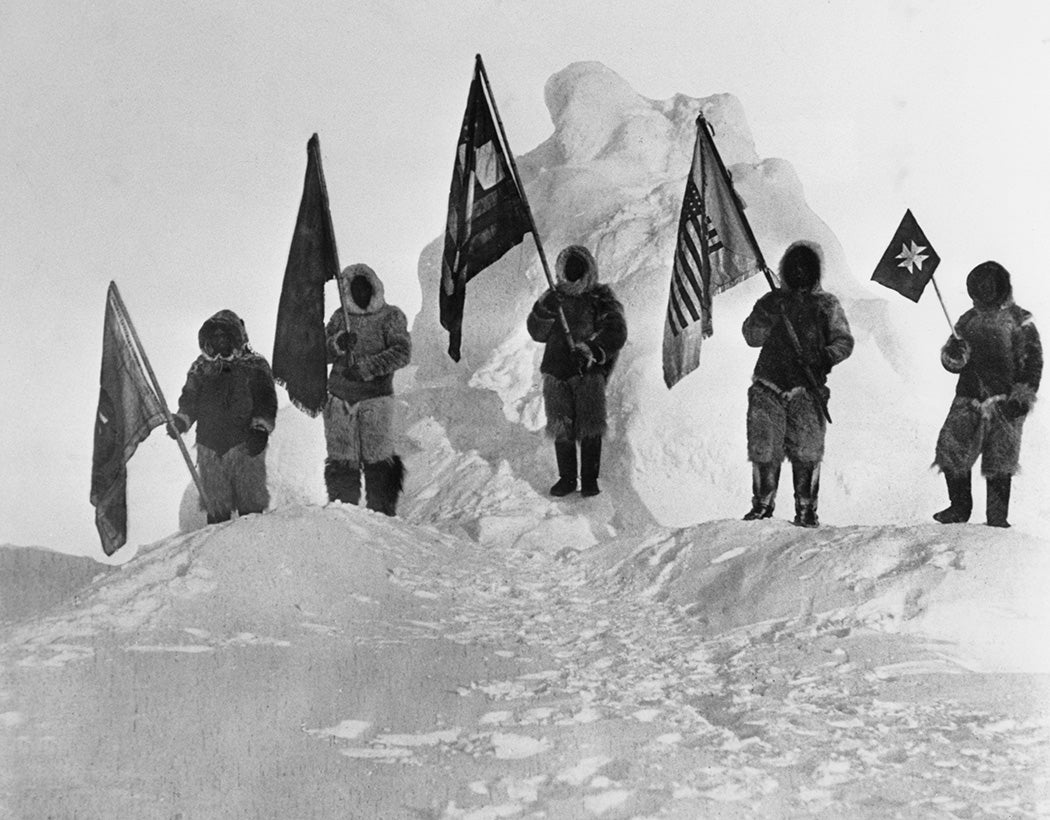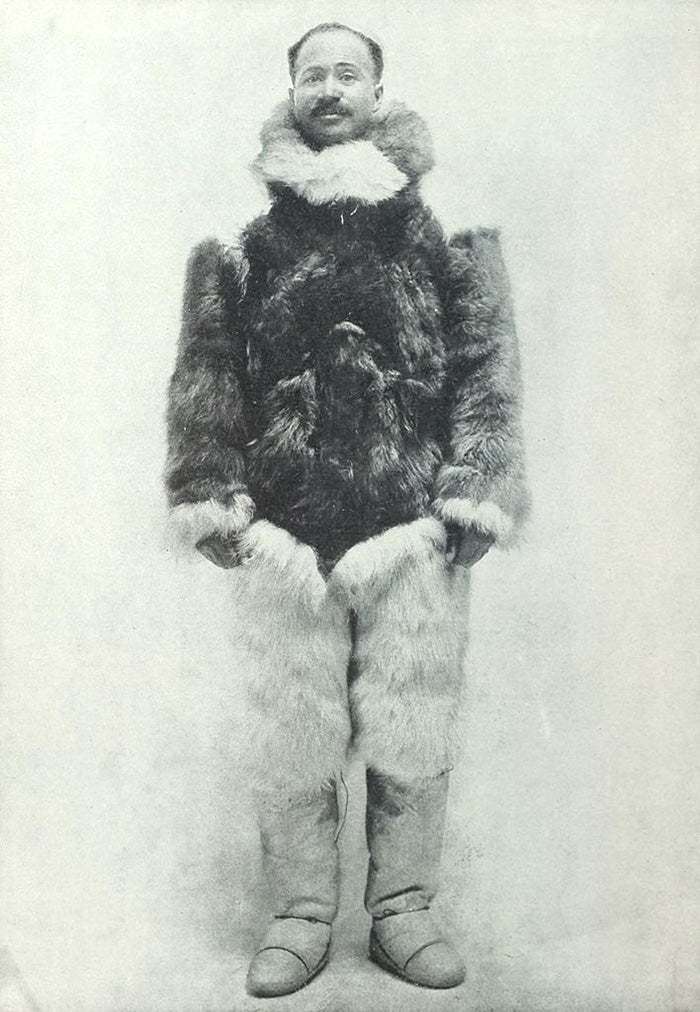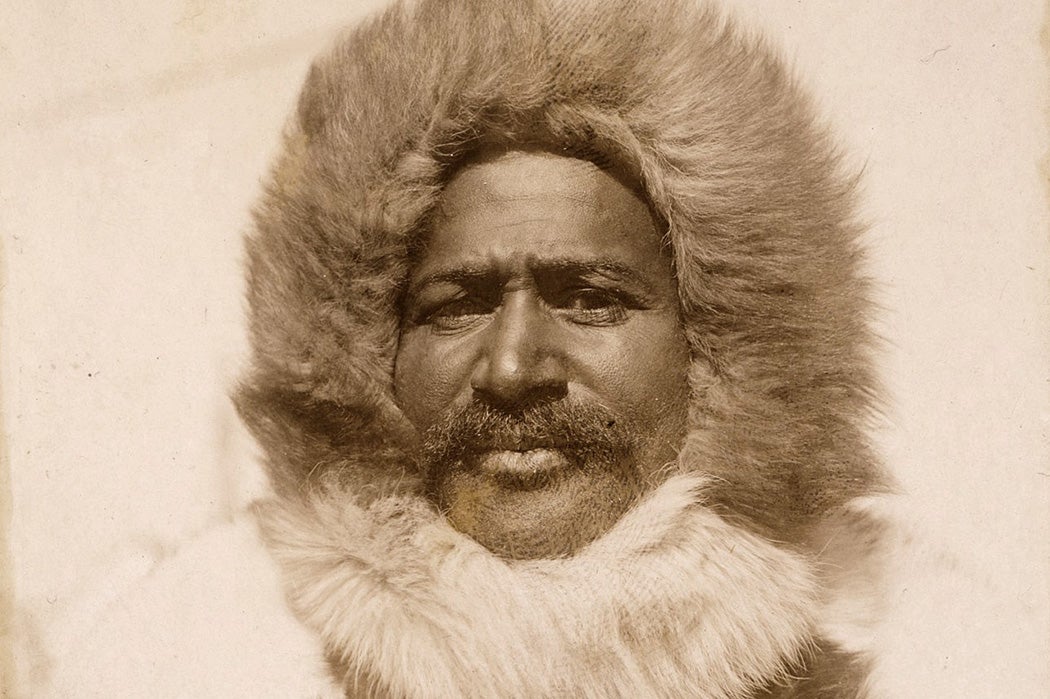On April 6, 1909, six men and forty dogs stood on a sheet of sea ice floating 413 nautical miles off the coast of Greenland. Their faces were raw after driving at break-neck speed for five days to reach their objective before supplies dried up. They’d made it to the North Pole. The four Inuit members of the team, Egingwah, Seeglo, Ootah and Ooqueah, appeared decidedly underwhelmed by finding themselves at the northernmost point on the planet.
“Is this it?” one allegedly asked. “The whites have been fighting over this?” Any excitement shown may have been more about finally going home than about arriving at the pole.
Nonetheless, for the two American men, Robert Peary and Matthew Henson, the planting of the expedition flag was the realization of a dream they had risked their lives for many times over during six previous (unsuccessful) Arctic missions.

Despite this victory, the atmosphere became increasingly strained after the marking of the pole. Peary took a sight with his sextant but didn’t tell the others the result. The men built their camp in silence. The next morning, Peary left without rapping on Henson’s igloo, which had become a morning tradition over the decades they’d been partners—and friends.
“It nearly broke my heart … that he would rise in the morning and slip away on the homeward trail without rapping on the ice for me, as was the established custom,” reported Henson in the Boston American newspaper in 1910.
Why the coldness? Although we can’t know for sure, we do know that Peary was white and Henson Black. Since 1877, much of the country had been embracing a theory of racial preference that nurtured Jim Crow laws, lynching, and the systematic disempowerment of Black citizens. Could it be that Peary couldn’t bear the idea of sharing his victory with a Black man? Or worse, had he deliberately chosen to take Henson on the final leg of the mission rather than any of his white teammates knowing that Henson would be written out of the narrative?
If it was the latter, Peary had gambled correctly. When readers of the New York Times awoke on September 7, 1909, they were greeted by a history-making headline: “Peary Discovers the North Pole After Eight Trials in 23 Years.”
“I have the pole, April sixth,” read the message Peary sent to the newspaper from Labrador, not “We have the pole.”
It’s likely that Peary chose Henson because of his unique combination of abilities garnered over a lifetime of exploring that began on a merchant’s ship when he was just twelve years old. The cartography and maritime astronomy skills he honed at sea were invaluable in the Arctic, where temperatures plummeted to minus 65-degrees Celsius and the brutal blankness of the sky merged with a spectral sheet of ice that stretched for thousands of miles. Henson spoke the Inuit language as well. He was known by locals as Miy Paluk, “Matthew the Kind One,” and had even fathered a son with an Inuit woman called Akatingwah in 1906.
Henson had built the wooden sledges on which they traveled and oversaw their maintenance. As Peary wrote in the January 1910 issue of Hampton’s Magazine (in the first installment in a series documenting the expedition), Henson “can handle a sledge better, and is probably a better dog-driver than any other man living except some of the best of the [Inuit] hunters themselves.”

When Peary and Henson returned to the United States, both wrote about the journey. Their accounts of the pole’s discovery and the aftermath are vastly different. In Peary’s The North Pole, Its Discovery in 1909 Under the Auspices of the Peary Arctic Club, he claims he brought Henson along on the final leg to the pole because he was concerned he (Henson) might not make it back to base camp alone. Despite his dog- and sledge-handing skills, Henson
[w]hile faithful to me [Peary], and when with me more effective in covering distance with a sledge than any of the others, he had not, as a racial inheritance, the daring and initiative of Bartlett, or Marvin, MacMillan, or Borup, other members of the expedition. (Emphases in original)
Though not directly contradicting Peary, Henson’s version of the story casts some doubt on Peary’s assessment of Henson’s navigational skills. In November 1909, Henson contributed a chapter called “The Negro at the North Pole” to The World’s Work, describing the journey from his point of view. He expanded on the story in his 1912 book, A Negro Explorer at the North Pole, indicating that it was he who led the return expedition to base camp after they had marked the pole’s location. Peary was “practically a deadweight,” wrote Henson, though he immediately qualified that statement with the suggestion that his readers “do not think that we could have gotten back without him for … we never forgot that he was still the heart and head of the party.”
When they made it home, Peary was promoted to Rear Admiral and spent the remaining eleven years of his life a hero. Henson, on the other hand, quietly worked as a clerk in the US Custom Service in New York City until his death in 1955.
In an often too rare rewriting of history, Henson’s contribution to the North Pole’s discovery began being recognized in his lifetime. In 1937, the Explorers Club of New York made him an honorary member. In 1954, he was invited to the White House by President Dwight Eisenhower to receive a special commendation. On the 79th anniversary of his victory, Henson’s remains were moved from the Bronx to Arlington National Cemetery, where they rest near those of his teammate. And in 2000, he was presented posthumously with the National Geographic Society’s most prestigious prize, the Hubbard Medal. Ironically, the very first recipient of the award was Robert Peary, who won it more than 100 years earlier.
Weekly Newsletter
One would have thought this would be the final chapter in this controversial story. However, there’s a final twist. Explorer Frederick Albert Cook claimed to have left a note at the North Pole in 1908, a full year earlier than Peary and Henson. A hearing before the Naval Affairs Subcommittee of the US House of Representatives found Peary’s claim more convincing and hoped the ruling would remove “deep-seated doubts created in the minds of many people by the inadequate examination and report of the Geographic Society.”
Although Cook has essentially been written out of history, his description of the pole, including a previously unrecorded westward drift of the polar ice, continues to be confirmed by eyewitnesses. Of course, it’s also likely that Inuit people had visited at some point throughout their 5,000-year history in the region.
Perhaps the “discovery” of the pole revealed more about American society in the twentieth century and the corrosive power of fame than it did about arctic geography after all.
Editor’s Note: This story was amended to clarify that Jim Crow, the structural and systemic oppression of Black Americans, was already in effect by 1910.







